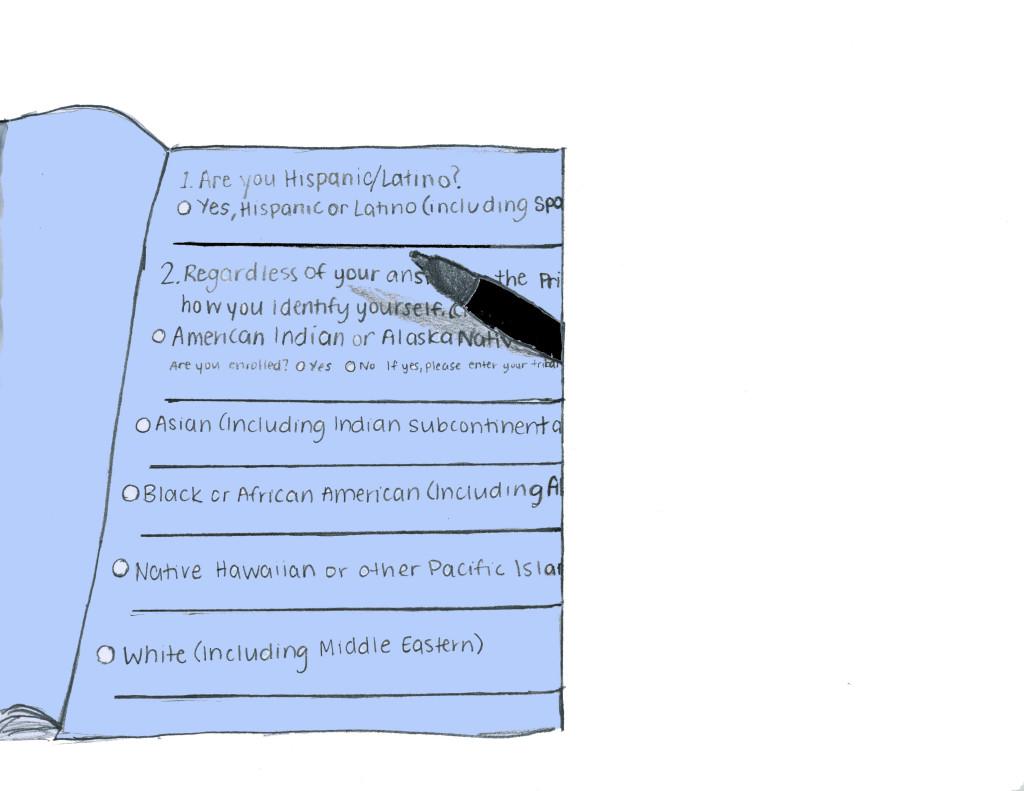As they begin their college applications, white and Asian high school seniors dread answering the simple question: What race are you? Asians believe they must somehow break the “Asian mold,” while Caucasians desperately want to seem “cultured.”
Affirmative action, the inclusion of race in college admissions, has many whites and Asians believing that less qualified minority students are favored over them.
“By establishing racial ‘quotas,’ affirmative action limits the amount of qualified applicants from any one particular group. Thus, groups with higher test scores…are unfairly hampered by these restrictions,” senior Miles Saffran said.
Affirmative action was originally intended to redress the oppressed African American population. However, affirmative action had the positive consequence of increasing diversity in colleges to provide educational benefits and real-world exposure.
Affirmative action provides educational benefits by allowing students to learn as much outside the classroom as inside. A diverse environment helps many students develop perspectives that can’t be learned in the classroom.
“I am exposed to [racial] diversity everywhere I go, and I am not only exposed to different cultures, but also interacting with different people,” senior Sebastian De Armas said.
Different viewpoints and ideas can prompt more vivid discussions and lead to more innovative ideas. As Forbes describes, businesses need diversity to gather more entrepreneurship ideas and better connections with the outside world.
Affirmative action also breaks down racial societal norms. We need to efface the unfortunately pervasive societal views that African Americans are just good at sports, that Hispanics always have large family gatherings and that Asians are workaholics. As students interact with different views from various races, such stereotypes will gradually erode.
This racial prejudice extends into society. The University of Chicago described how 50% of employers were less inclined or unwilling to call prospective job employees for an interview if their names were “black-sounding.”
Most of the main arguments against affirmative action fail to refute it, and they cannot maintain the same level of diversity.
First, opponents often say affirmative action leads to the mismatch theory. As the New York Times explains, this theory claims that African Americans and Hispanics are given a significant boost in college admissions, which prevents them from being able to handle the college workload and forces them to drop out.
College Counselor Lester Johnson disagrees with these objections.
“Actually the graduation rate at top tier colleges is inordinately and even extraordinary high for all categories of students,” Johnson said.
In addition, opponents often cite race-based affirmative action as a violation of the 14th Amendment. They state certain preferences given to underrepresented minorities, based on race, are unfair, since over-represented minorities don’t get a similar “boost.” But, this argument has failed in court because race is only small policy for a holistic admission process.
“Colleges ‘could’ simply run an excel spreadsheet and admit students strictly according to test scores and GPA,” Johnson said. Just how desirable would that be? Colleges are desiring some oregano from Appalachia, some cumin from Idaho, some spice from first-generation America, some pizzaz from a music prodigy with soft test scores, some high profile from the Olympic Silver medalist.” Because race is not a decisive factor in affirmative action, it has not been unconstitutional.
While some argue for a race-neutral policy, this has failed in action in places like the University of California. Diversity has plummeted with so-called “race-neutral” policies. The university spent tens of millions of dollars trying to increase diversity after California banned affirmative action, but the percentage of African Americans admitted declined by almost 50%.
Some critics have stated a socioeconomic standard instead of a race-based standard could improve diversity.
“We need to change the way we define affirmative action. By basing affirmative action on socioeconomic status, it raises the diversity of the student body, does so in a more fair and balanced way, and still allows for the acceptance of underrepresented minorities,” Saffran said.
However, the University of California experimented with socioeconomic standards, and empirical evidence explains that it failed to achieve as much diversity as current affirmative action policies.
Because affirmative action continues to bring so many benefits and alternatives fail, we should learn to affirm affirmative action.




